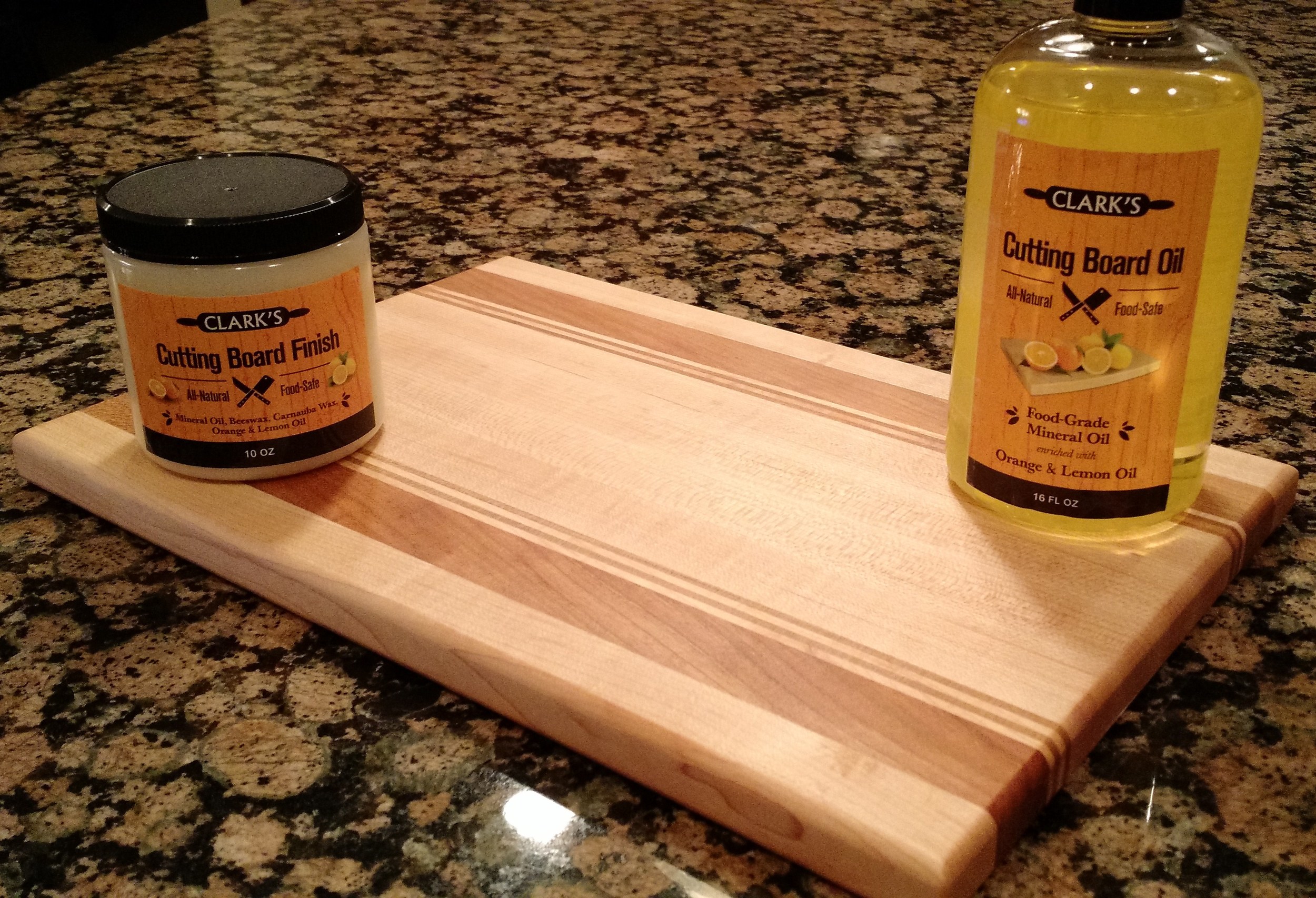Standard Disclaimer: I have no affiliation with the manufacturer of these products. I purchased them with my own money and the Amazon links are provided below as a convenience for the reader; they are not affiliate links and I gain nothing if you buy them. I just wanted to tell you about a product that I like. So there.
It’s the holiday season… and that means shop-made gifts! One of the items I made this year was a small cutting board from maple and cherry scraps. When it came time to apply a finish, I decided to try out Clark’s Cutting Board Oil and Clark’s Cutting Board Finish.
Since this cutting board was raw wood, I wanted to soak it with oil before applying a final finish. That’s where Clark’s Cutting Board Oil—a wonderfully scented mixture of mineral oil, orange oil, and lemon oil—comes in. Could you make this yourself? Of course. Although, I’m fairly certain that buying mineral oil, orange oil, and lemon oil, and then spending the necessary time to get the correct mixture of the three will be more costly than just purchasing Clark’s pre-made oil mixture. The application process was simple: I poured some of the oil mixture on the board and rubbed it in with a clean cloth. I propped the board up on painter’s pyramids and let it soak for a few hours. When I came back, the majority of the oil had soaked into the wood, so I wiped it down with a clean cloth and applied a second coat.
Now, I could’ve stopped right here. But, since this cutting board was intended as a gift for mom, I decided to go the extra mile and applied a coat of Clark’s Cutting Board Finish, as well. This product has the consistency of a paste wax—it’s a mixture of carnauba wax, beeswax, mineral oil, orange oil, and lemon oil—and it gives you the advantage of some additional water resistance when applied on top of a standard oil treatment. Could you make this yourself? Of course. But I personally wouldn’t for all of the same reasons I mentioned earlier. Applying the finish was, again, a snap: I rubbed it into the wood in a circular motion with a clean cloth and let it sit. A few hours later, I came back and buffed the board with a clean cloth. Done!
So what’s the final verdict? Well, my cutting board looks great, is fully seasoned, and smells so good that I had to physically stop myself from gnawing on it. When you buy a pre-made cutting board finish like this, you’re paying for convenience. If you’re a woodworker who batches out dozens or even hundreds of cutting boards, it’ll be more economical for you to mix your own custom finish. But for someone like me who only builds cutting boards every once in a great while, a product like this is fantastic. It’s quick, affordable, works great, and these two bottles will last for years.

